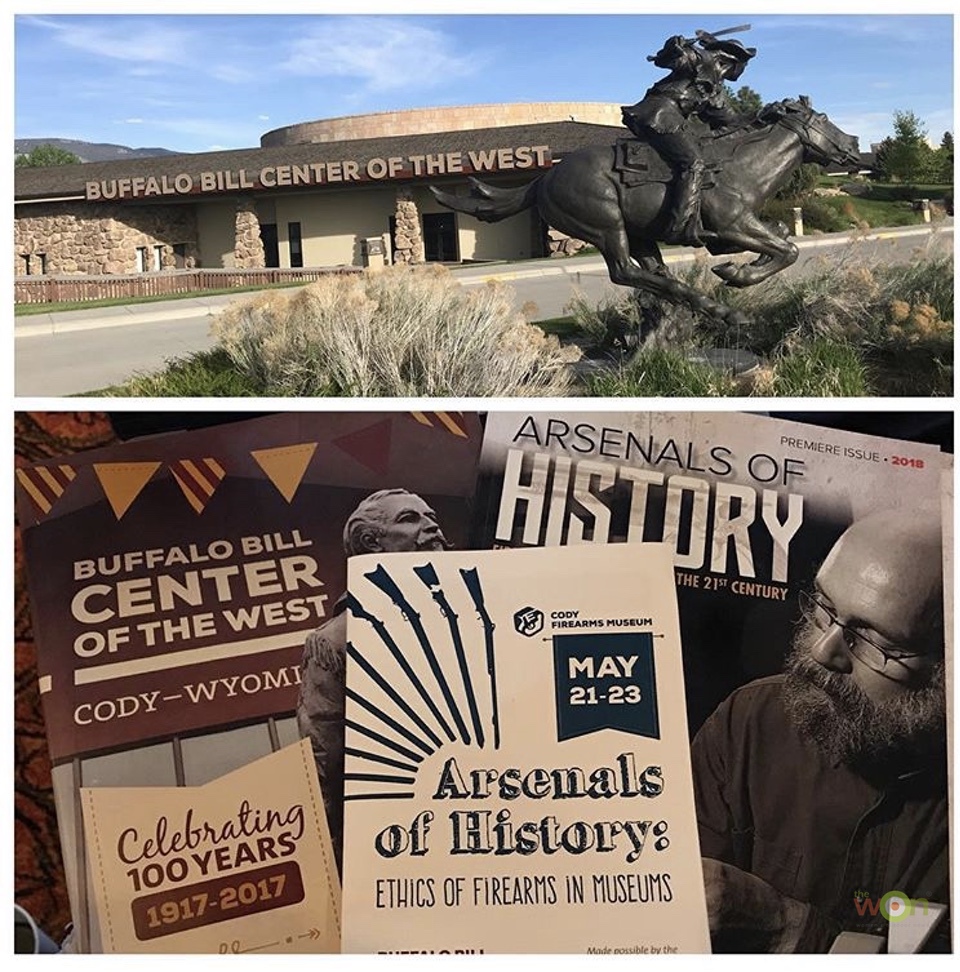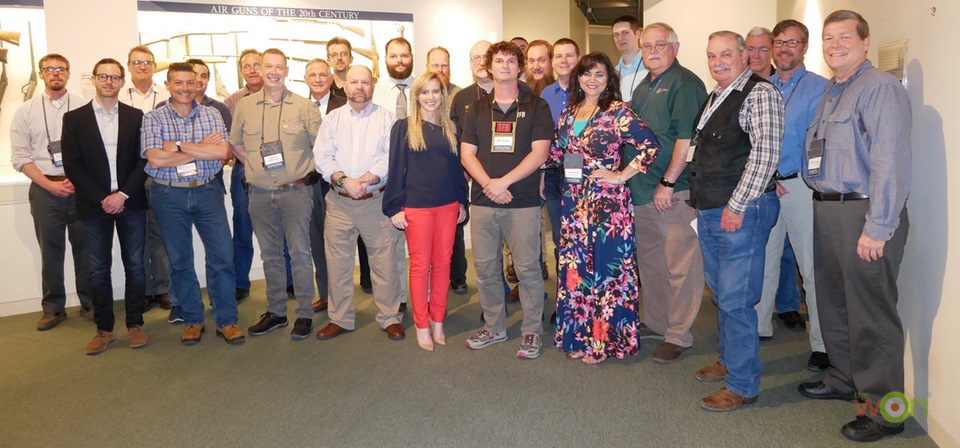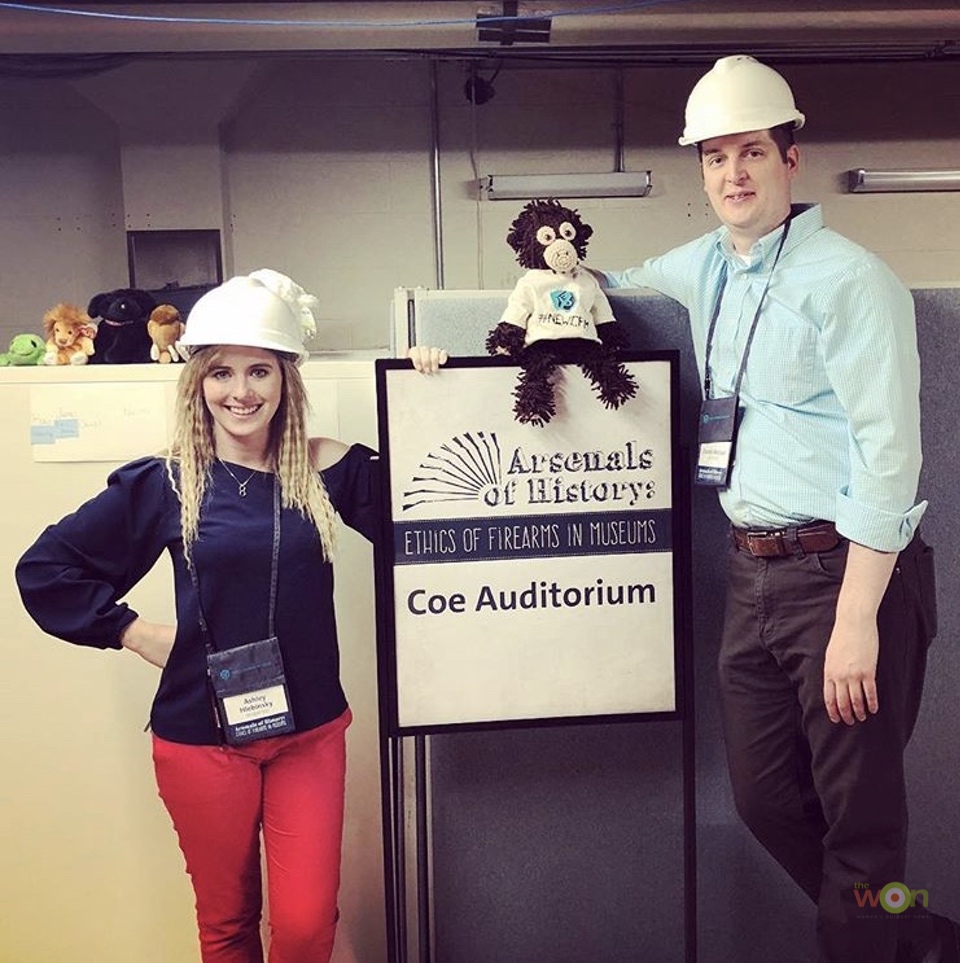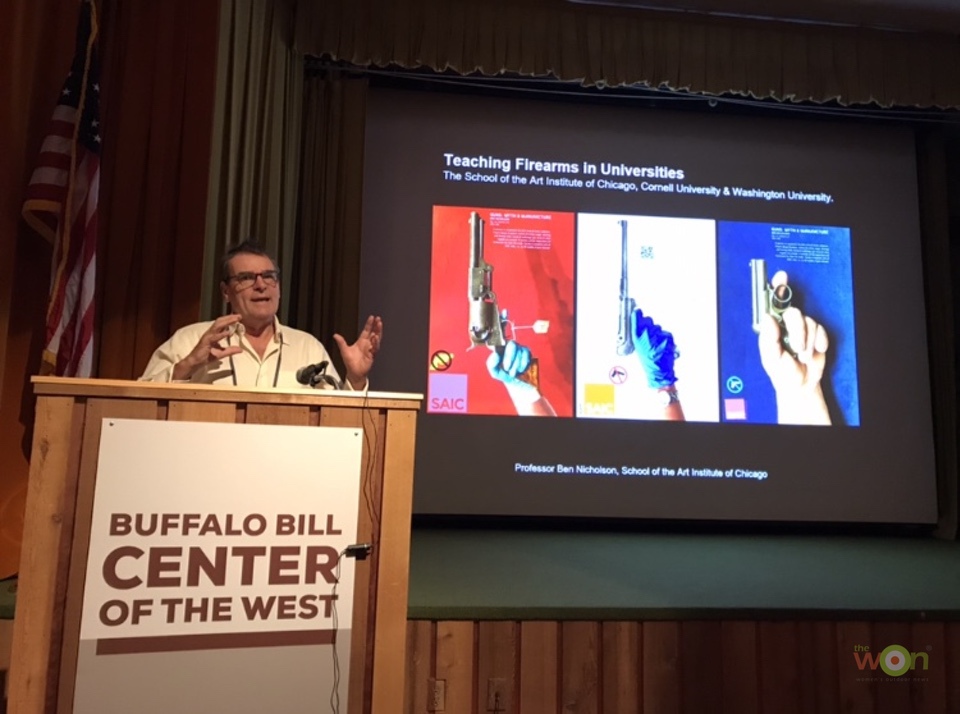School is out for summer, and your calendar is soon going to be filling up with vacations (or perhaps “stay-cations,” closer to home). There are plenty of fun places vying for your family’s time, attention and dollars, and it is my hope to encourage you to spend at least a little bit of all three of those things at some of the amazing museums America, and your hometown, have to offer. It was my privilege to have been invited recently to the Arsenals of History Museum Symposium, where curators from all over the world met to discuss the special challenges involved for curators who include firearms in their museum collections and displays. The symposium was a fascinating look into the work that curators do, and the incredible responsibility museums bear in helping to preserve and tell the story of our nation.
The Flame is sponsored by AZFirearms
We know that museum curators keep our history accessible and alive for future generations, but what we often don’t realize is that they are the unsung heroes who instigate informed conversations from all sides of the firearms debate. Museums and those who are tasked with preserving history have to traverse a sometimes tricky political landscape when it comes to certain collections and displays. Most notably, those containing firearms. There are federal, state, and city laws to consider. There are the details of the firearms themselves, and the challenge of creating interesting and thoughtful displays, while neither vilifying nor glorifying the firearms. And, there are even challenges in how the museum advertises the collection or display to the public.
Those of us who value our Second Amendment Rights would do well to be mindful of these things and to actively offer our help to our local museums. Museums run on donation and tourism dollars, and many have volunteer staffs. Public interest and tickets sold are the meters by which museums measure their level of success. When we help to organize field-trips for children and even the adults in our local firearms clubs, we can infuse our local museums with new energy and audiences that may not otherwise find themselves touring a museum as part of their weekend plans.

I wanted to turn to someone who is an expert in these matters and ask her a few questions about these topics. Ashley Hlebinsky is the Robert W. Woodruff Curator of the Cody Firearms Museum at the Buffalo Bill Center of the West. Hlebinsky is the first female firearm curator at the most prestigious firearms museum in the United States, and she is the recipient of the prestigious NSSF/POMA Grits Gresham Shooting Sports Communicator of the Year Award. Ashley played host at the recent gathering of museum curators from across the globe on the topic of “Ethics of Firearms in Museums.”

(Miles Vining, TFB photo)
Cheryl Todd: Tell us about your recent (and 2nd Annual) Symposium on “Ethics of Firearms in Museums?”
Ashley Hlebinsky This was the second year for the Arsenals of History symposium. Last year’s symposium was an enormous success. It was the first time we brought together museum professionals and academic historians who study firearms to discuss some of the opportunities as well as limitations of having firearms in our collections in the 21st century. This year, we focused specifically on ethics – which covered everything from how do we manage access to collections to what is the role, if any, of firearms collections in today’s gun debate. We had a range of institutions represented from the Smithsonian and the Metropolitan Museum of Art in the US to the Royal Armouries and the Dutch National Military Museum in England and the Netherlands respectively. We also had professors from the Art Institute of Chicago and Wesleyan University who have been studying firearms through various academic lenses.
Cheryl Todd: Why should we in the 2A community support our local museum with both volunteerism and donation dollars?
Ashley Hlebinsky: I would say everyone, in general, should support either their local museum or a museum/historic site that has meaning for them. Not only are those institutions preserving historic artifacts but they are also the public educators keeping those histories alive. In terms of firearms and volunteering, it can be especially helpful as there are not a lot of people who specifically study firearms and museums, and so having someone knowledgeable as a volunteer can be a good starting point for a lot of museums to come up with educational programs in a safe handling environment.

Cheryl Todd: What would happen if we sterilized our museums of anything unpleasant that has happened in American history or world history?
Ashley Hlebinsky: How to interpret tragedy and war is a constantly discussed topic in museums. Museum professionals walk a fine line between sterilization and glamorization of historical episodes, and they also have to consider what the visitors are thinking as they come into a museum. In terms of firearms, they have often been exhibited more like you would see in an art museum, with little historical context. At the Cody Firearms Museum at the Buffalo Bill Center of the West, we are trying to blend that object driven display style, which is popular with collectors and enthusiasts, with a deeper contextual history that interprets the history of firearms, good, bad, or indifferent.

Ashley Hlebinsky and Danny Michael
Cheryl Todd: Let’s talk about the details of the museum’s upcoming renovations – educational features, firearms safety, etc. What wonderful things are in store for your Re-Grand Opening in 2019?
Ashley Hlebinsky: The Cody Firearms Museum is in the process of a $12 million full-scale renovation. If you are traveling to Cody in the next year, get in touch with us at the museum if you want to see the guns because a lot of stuff is shifting and changing. We will have a grand opening in the summer of 2019. This new museum will display more of the collection over 2 floors.
We recognize at the museum that we have 2 very different audiences. The first is the gun enthusiast audience. And the second audience doesn’t have a lot of, if any, experience with firearms. At the Center, we have 5 museums on one site, so we get a lot of people who paid their admission to see, say, the art museum, who wander into the gun museum. In the renovation, we are doing a lot to educate them about terminology as well as safety so that they can understand what is typically a very technical history. We are also contextualizing the histories more than has been done in a firearms museum in the past. Our goal is to lay out the diverse narratives and let people draw their own conclusions of what they think of firearms.
Cheryl Todd: You were just voted as the president of the newly formed International Museum Firearms Professionals Association – tell us about this effort? What is the mission? Who is a member and why?
Ashley Hlebinsky: This year at our symposium, we had our first meeting of the association, and I was elected president of it. Now we just have to come up with a name! This association will be the first of its kind to gather together museum professionals with firearms collections and academic historians who study them.
We have several reasons for creating this association. The first is that there is a gun or gun-related artifact in most museums in the United States, but there are very few people who are trained with them. We want to invite those museums to join and engage about proper handling, safety, security, legality, storage and interpretation. Additionally, we recognize that the academic study of firearms is predominantly relegated to political history, so we as individuals in the association will continue to develop academic scholarship on the material culture of firearms. In fact, the association is publishing an annual journal as one arena for this scholarship.

And the final big idea for the association is creating an avenue for the study of firearms in the future. Currently, you can’t study firearms history as you would art history in undergraduate or graduate school, so we would like to engage more professors in creating coursework, so this topic can be more thoroughly studied. The association also will have subcommittees that tackle other issues as they arise.
All in all, a theme that arose among all the institutions is that firearms artifacts tend to be some of the most publicly popular displays in museums, but are the least respected academically and we want to change that dynamic and perception.
Cheryl Todd is the executive producer and co-host of “Gun Freedom Radio,” owner of AZFirearms Auctions, Pot Of Gold Auctions and founder of the grassroots movement Polka Dots Are My Camo. Cheryl is the Arizona state director for The DC Project and travels the country speaking as a champion for our Second Amendment rights. She is a driving force in preserving the legacy of freedom for generations to come. View all posts by Cheryl Todd